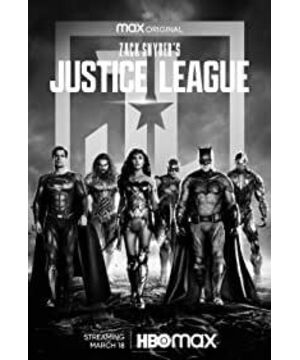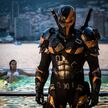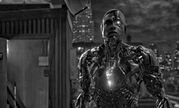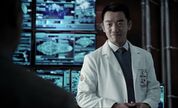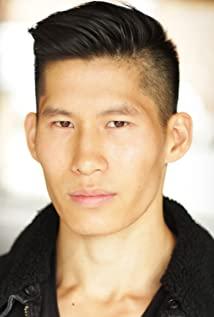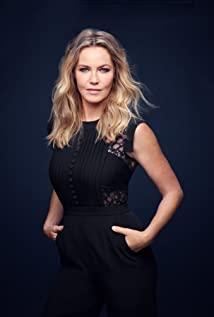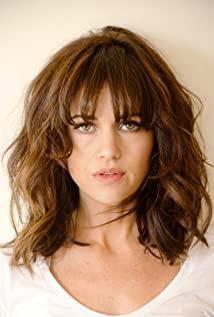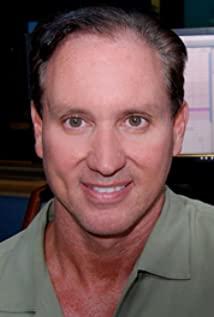[Overview——Dusk of SnyderVerse, Dawn of DCEU]
Warner and DCEU played the wrong game from the start: Zach Schneider.
As a typical visual department and "author" director, Zach Schneider became famous in the comic adaptation of "300" and "Watchmen". But his very distinctive image style is destined to not become a hot market: a large number of slow motion + close-ups, low saturation "color palette" (especially the use of black), which are short, flat and fast formula entertainment products with MCU Going differently.
This is another typical divergence between "Old Hollywood and New Hollywood": the former turns the comic material into a unique visual novel, and the latter turns the comic material into a new and increasingly popular element; both; This is not in the same creative dimension.
The latter has a larger market and audience, while the former has a more fanatical following-can you imagine Marvel fans calling Edgar Wright’s "Ant-Man" day after day for years?
However, this cult of personality also ruined the DCEU. Although MCU is formulaic, it is not in a word; from "Captain America 2" and "Guardians of the Galaxy" to "Black Panther" and "Thor 3", when the big framework is established, the introduction of innovation is an inevitable trend. However, Zach Schneider's talent and ambition to operatize comic material made it difficult for others to stand up to it, and instead hindered the development of other works-"Suicide Squad" was the first victim, and "Justice League" was the best proof. .
The Weiden version of "Justice League" is the result that no one wants to see-including Warner DC, Zach Schneider and Jos Weiden-but the failure of this version is completely predictable: Any creative work that is forced to take over will not end well. Ironically, similar situations have already appeared in Richard Downer and Superman 2.
Jos Weiden, who created the "Avengers" in one hand, and his "Justice League" after some manipulation, proved how incompatible creative styles can bring disaster to the work-like being exposed to radiation The same beautiful fish with many flavors. This also indicates that no matter what the future of DCEU, Zach Schneider and SnyderVerse must be left-especially the latter, which will free up a lot of space, budget and market for other creators. Diversification can better serve the film industry, especially those with dozens or even dozens of units as a unit to create a full-scale entertainment industry that continues the entire generation of screen experience.
Zach Schneider left the most precious legacy for DCEU: SnyderVerse is a stepping stone that the immature DCEU does not deserve to have, but is needed.
DCEU will eventually be reborn in the ashes of SnyderVerse, although no one wants to see the latter.
The post-Zach Schneider era has just begun. Wen Ziren's "Sea King" and David F. Sandberg's "Thunder Shazam" have shown the possibility of a more optimistic and positive DCEU (except for FOMO's "Birds of Prey"); even if it is not satisfactory "Wonder Woman 1984" also successfully broke the old belief that the leopard girl is "impossible to screen."
But more importantly, it is to see these filmmakers spontaneously create a new cinematic universe that has their own characteristics without losing the possibility of coexisting in the same room. Although this universe lacks a Kevin Fitch, the decentralization of collective creation-which is the direction that MCU began to strengthen in the third phase-may also be the direction that DCEU urgently needs.
[Production: After three years of screening, all the negatives are still left]
The 4 hours and 6 chapters of "Justice League" may be closer to Zach Schneider's vision, but this does not mean that this is the best Zach Schneider movie-this honor still belongs to "Watchmen" and "Dawn of Justice"-From the creator's point of view, the biggest challenge in resuming a project a few years ago is the continuity of mentality and inspiration: this is not limited to movies, it is universal.
The guided cut version of "Justice League" has a rough side: not only in CG special effects, but also in editing and sound effects editing-the insertion of the character theme music is unreasonable, and it is not much worse than the symphonic poem of "Dawn of Justice". On the one hand, this is naturally due to the stretched supplementary budget and the later period affected by the epidemic; on the other hand, it is the change in Zach Schneider's personal mentality.
A typical example is that the first two materials of the movie, the Comic-Con segment and the first official trailer, were all released before Joss Weiden took over. The mood is obviously much higher and the rhythm is more compact; the guide cut version of "Justice" The trailer of "League" goes back to the old path of "Watchmen" to the epic of depression.
This is of course mixed with the subjective perception of the trailer editor, but usually, the trailer should be the same as the main film in terms of emotional guidance: the two versions of "Suicide Squad" trailer by David Ayer and James Gunn, It clearly shows the difference in the director's style and the tone of the story.
The death of his adopted daughter Autumn obviously had a great impact on Zach Schneider, which also caused him to have a higher resonance with the plot design of many emotional defects in "Justice League", and the operation time of these plots was also slower. Up.
Wen Tun's literary drama and the slow-motion ratio of 1/10 make "Justice League" seem extraordinarily long, and in some moments even unbearable; in "Justice Dawn" over 3 hours, the problem is much lighter. This is not because the plot itself is not enough to catch people, but mainly because the rhythm is still lacking in polishing. Zach Schneider, who has full power, is obviously not willing to make any more scissors-which naturally has the purpose of thanking the fans-and this is also one of the hints that the creative inspiration has not been able to continue.
This is not to say that "Justice League" is a terrible movie-it is higher than the Weiden version-the story of "Justice League" is far simpler and more straightforward than "Dawn of Justice", let Zach Schneider and Chris Trio can have more time to portray characters, and this is where Zach Schneider of the visual department is most bad at it.
By shifting the focus from events to characters, "Justice League" has a quality of introspection; especially when compared with the previous two SnyderVerse movies and the Weiden version. These changes are undoubtedly positive, because Zach Schneider does not need to delve into how to present epic visual effects-his pioneering visual design on "Man of Steel" has affected "Thunder Shazam" and even CW's "Superman and Louis"-but need to understand how to make the characters easier for the audience to understand and empathize.
Therefore, although "Justice League" is the furthest away from the mortal world in the story, it is the clearest in character portrayal. Because of the DCEU's operation of gathering first and then dispersing, characters spanning several films need to find important emotional cornerstones here. Wen Ziren and Patty Jenkins obviously have different aesthetic considerations, but the axis of the roles of Aquaman and Wonder Woman can be found here.
Based on the role, it also eases the sense of stage of "Justice League". As the first SnyderVerse movie to give up "realism" and fully embrace overhead fantasy, for "Justice League", the 4:3 film format emphasizes the front and back scenes while also having a subtle sense of "oldness". This is more complementary to Zach Schneider’s preference for fixed camera positions, which can maximize the aesthetics given by the scene.
[Performance: Life is good, but it can be better]
In the entire SnyderVerse, the guided editing version of "Justice League" has made the most popular effort so far: the theme is not as twisted as "Man of Steel", the story is not as vague as "Dawn of Justice", but the visual effects are the same full and rich. . For a DCEU top production that wants to benchmark "Avengers", at least it has finally changed its mindset.
The version rewritten by Jos Weiden in 2017 is a direct appropriation of his own "Avengers": not only the plot, but also the creative ideas. Weiden's rewriting is based on the assumption that this movie (and other movies in the same series) does not have the function of independent expression, and its primary purpose is to allow the continuous operation and output of industrialized content production.
But this is not Zach Schneider's style. The sloppy Weiden version has only external events and goals, but no internal motives. The guided cut version of "Justice League" has a clear core: "self-salvation". Double the length of the film, making three families dysfunctional, two carrying the burden of the deceased, and one main character who is re-seeking the meaning of life are displayed more appropriately. Even Steppenwolf is no longer a one-dimensional conqueror of the world. Gain (and then lose) a new life as a "middle-level leader".
In the guide version, the story line of the steel frame has been the most comprehensive restoration, and it is more complete in the presentation of the father-son relationship and personal transformation; relatively speaking, the Neptune and the Flash are somewhat rigid—especially the Neptune and personal films here. In comparison, there is a serious lack of that clumsy and easy-going charm-this does not exist in the Weiden version, because the (supplement) drama of the three people is not very good, together with Batman and Wonder Woman, full of Marvel-style light and thin.
However, the 4-hour film length is also the dead spot of the guided cut version of "Justice League."
One is the visual style. An unprecedented number of slow motion pictures, Zach Schneider’s iconic slow motion pictures mostly appear in the third person, or are retellings of events ("300" Di Rios, "Watchmen" Luo Xia Ji, "Dawn of Justice" Gods Among Us), or memories of events ("Beautiful Lie").
This principle is still upheld in the "Justice League": the former includes the ancient war, and the latter includes the death of Superman and the football game. This is not a bad thing, but there is an inherent conflict in "Justice League": The Flash. The Flash’s superb power POV will also be shown in a lot of slow motion, which will inevitably cause duplication and confusion in the visual experience between the two. This situation was particularly awful in the first half of the downturn, and it didn't get better until the midfield battle.
The second is structure and rhythm. Unwilling to cut the scissors, there are a lot of ambiguous and tasteless plots in "Justice League", which abruptly lengthens the time. Some of these plots are dealing with problems (such as steel bone memories and ability introductions, some shots of Atlantis), and some are design problems (such as singing at the beach, some shots of Paradise Island), neither promote the plot nor effectively shape the characters. Many of them are disposable pens.
The current 4-hour version still has two development directions in the editing. One is to drastically reduce these inefficient plots, while adjusting the focus of the role, replacing the main narrator with Steel and the Flash, reducing the content of the Big Three that has already appeared. Cutting down an hour can significantly improve the narrative efficiency and better focus on the Steppenwolf clues.
The other is based on streaming media and completely turned into a chapter-style drama. Re-editing from the perspective of the narrative of the series can retain all the current content, and can also add new content and fullness to the Flash and Aquaman part-in the current version, the shaping of the two people is somewhat split and fragmented. It’s as if Zach Schneider himself made a "Flash" and a "Sea King" (and the new version of the ship "Apocalypse Star Wars"), and then forcibly cut them together.
In short, "Justice League" finally got rid of the "God of the World" myth system that Zach Schneider was thinking about at the center of SnyderVerse, and was closer to the standard superhero model drama. But this model play does not require four hours at all.
[Summary: Dejected Ecstasy Rice]
In a sense, Zach Schneider is the "Mr. Glass" who holds "Heroes with a Thousand Faces": He sincerely believes that the existence of superheroes has a revelatory meaning beyond comics, and is related to myths and religions. Faith is one. The purity of this spirit is an important reason for him to gain the most steadfast fans.
"Justice League" basically completed the task assigned by the DCEU-like a "Lord of the Rings", a fantasy epic where heroes are assembled and then singularly deep-but it surpasses its own meaning of existence: one is launched in 2017 It is almost a 4-hour feature-length masterpiece created for streaming media, and the content is nothing more than stopping the invaders of the five major planets in the galaxy, and its fate has long been doomed.
This is also the reason why Zach Schneider's SnyderVerse and "Justice League" will enter history together: too pure and personal artistic creation, and the contradiction between the pursuit of the most popular entertainment products is irreconcilable.
This is definitely not a great movie, but it has all the qualities of a real work of art, and it has never disappointed the people who expected it.
【related suggestion】
"Batman v Superman: Dawn of Justice"
"warder"
"300"
View more about Zack Snyder's Justice League reviews


